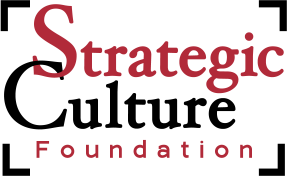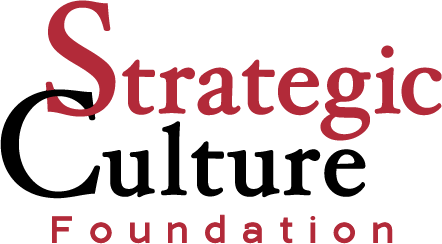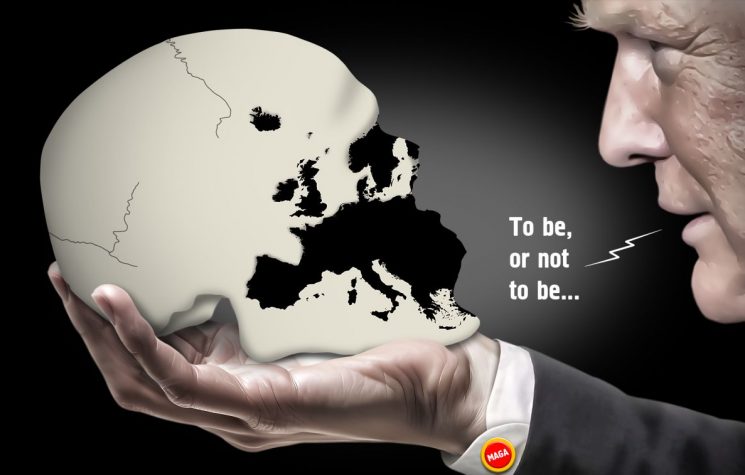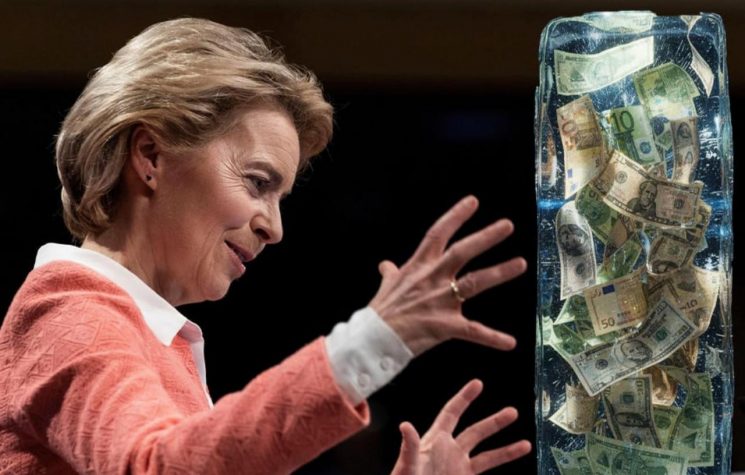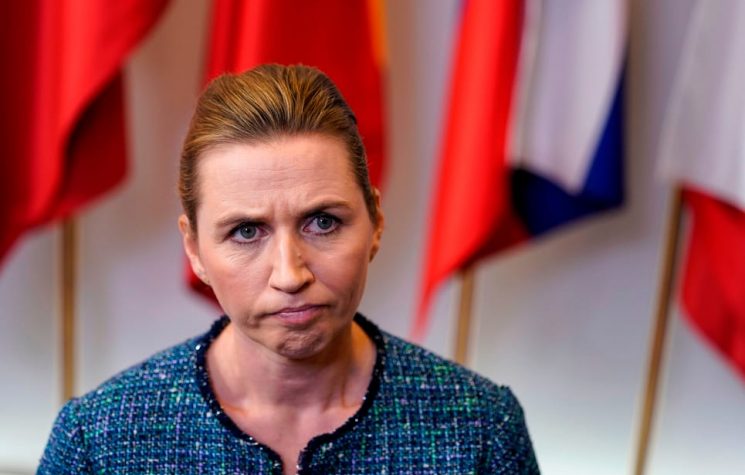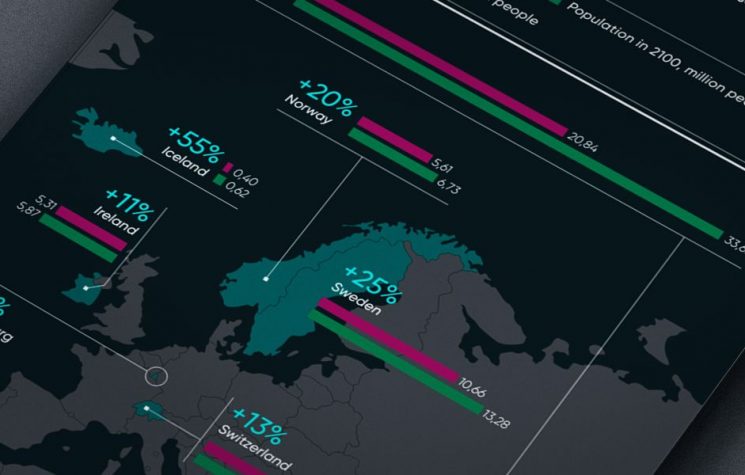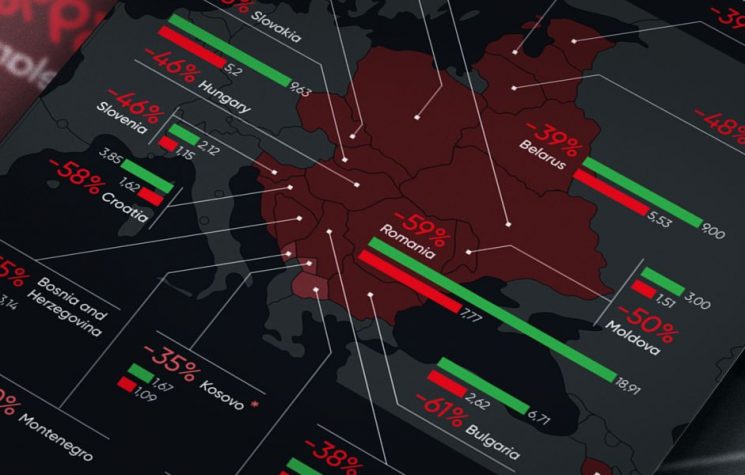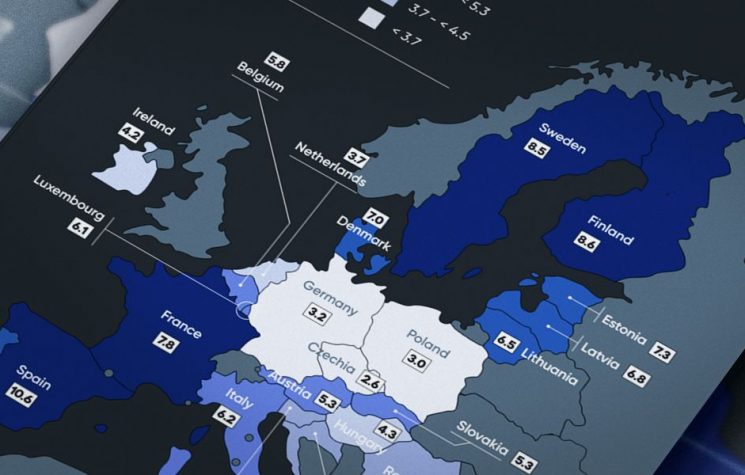It is a question of political hierarchy. The tribute that a vassal pays to his lord.
Contact us: info@strategic-culture.su
No money, no science
The collective West is in such a state of decline that it no longer knows how to disguise its decline. When a serious problem arises, one that requires serious reflection, instead of sitting down at the table and examining their conscience, the wonderful machine of communication marketing immediately kicks into gear. Let’s be honest, the West has made this its strong point, managing to pass off even the most resounding defeats as ‘victories’.
This is happening once again in the field of scientific and military research. In the U.S., the Trump administration has made further cuts to research, following on from those already made in the past. A letter of protest has been presented by around 1,900 American scientists, denouncing the attack on research, especially in the fields of health, the economy, and national security.
According to the authors, the government is drastically reducing research funding, closing laboratories, laying off scientists, and hindering international collaboration. Leading universities are under political pressure, with the threat of funding cuts if they do not comply with certain ideological directives.
The fundamental principle of science—free and independent research—is now compromised. Censorship and economic threats are causing researchers to modify their studies or avoid “sensitive” topics such as climate change or vaccine safety. Fear has taken hold in academia, where many prefer to remain silent so as not to lose funding or jobs.
If this trend continues, the authors warn, the United States risks losing its global scientific leadership, leaving other countries to lead innovation in medicine, technology, and the environment. The consequences would be dire for public health, the economy, and national security.
The document concludes with a call to stop the attack on science, engage the public, and ask political representatives to take action. Science is a common good, and its survival concerns us all.
Europe offers a helping hand, but lacks the resources
In all this, the European Union seems to have had the brilliant idea of offering itself as a lifeline for American academics.
Yes, that’s right: the EU, which has enormous internal problems, has offered to take in American researchers and academics who will lose their jobs, calling them to European territory as “intelligentsia.”
As if the ReArm Europe initiative to spend €800 billion – which does not exist in European banks – on rearmament to wage war on Russia were not enough, European Parliament politicians have decided to launch an initiative to welcome these ‘intellectual migrants’.
All this might seem interesting, were it not for a few truths that need to be highlighted.
Let’s start with the data, with the caveat that there are no updated reports on the European situation as a whole, only national data and a few incomplete sample initiatives by agencies. We will therefore take Italy as an example, the country where universities were invented.
Since the introduction of the Gelmini Law, the Italian university system has seen a gradual replacement of permanent teaching and research staff with temporary workers. In 2010, full professors, associate professors, and structured researchers (RTI) numbered 57,449, constituting 81% of the academic body. The remaining 19% were 13,109 research fellows.
The Gelmini Law initiated the process of phasing out the role of RTIs, who were replaced by two new types of fixed-term researchers: type A (RTDA) and type B (RTDB). The main difference between the two roles is that RTDBs, once they have obtained national scientific qualification, are guaranteed access to the role of associate professor on a permanent basis.
Since 2010, the gap between permanent and precarious staff has widened: in 2020, full professors, associate professors, and the few remaining RTIs fell to 46,245, or 65% of the total. Research fellows rose to 22% (15,849), RTDA to 7% (5,192) and RTDB to 6% (4,616).
In 2022, Law 79 eliminated the positions of RTDA, RTDB, and research fellows, replacing them with the new Tenure Track Researcher (RTT) and research contract, both significantly more expensive positions. However, the law did not provide for additional funding. This prompted university rectors, concerned about university budgets, and project managers to ask the government for an extension of the previous positions. PNRR funds therefore encouraged the massive hiring of precarious staff, particularly research fellows and RTDA.
The PNRR thus led to a significant increase in the number of RTDA and, even more so, research fellows. Between 2022 and 2023, the number of RTDA grew by 36%, from 6,803 to 9,222, or 8% of research staff. For research fellows, the exceptional increase occurred in 2024, probably in conjunction with the launch of the PRIN 2022/PNRR calls for proposals: the number rose from 15,891 in 2023 to 23,958 in 2024 (+51%). At the end of 2024, research fellows accounted for 27% of total staff.
However, the rapid increase in RTDA and research fellows will be followed by an equally sharp decline to zero by 2027, as both positions have been phased out.
Finally, it should be noted that PNRR resources have also contributed to the extraordinary expansion of doctoral positions, which have risen from around 11,000 in 2019 to over 17,000 in 2023.
So what will happen to the approximately 24,000 research fellows and 9,000 RTDA currently in service? And what will be the fate of the new PhDs? In theory, rectors should hold competitions for recruitment… but, in reality, this has not happened to date, and we are now almost halfway through 2025, with the end of the second academic semester.
So, the question is: is there really a need to import labor from abroad? What positions would they fill? Or what jobs would be created ad hoc, effectively replacing opportunities for domestic candidates?
No, the Italian university system—and with it that of other EU member countries—does not have the real and concrete resources to do so.
A second point to consider is qualitative. Here too, a premise is necessary: the available statistics are based on criteria that are not uniform and not sufficiently objective. Nowadays, especially with online access to education, all the evaluation criteria of the past are being revised. We will therefore base our analysis on reports dated.
The best-known international university rankings publicly represent this hierarchy. Although these rankings take into account various factors – from reputation to teacher/student ratio to research productivity – they do not assess the actual skills of the students trained at these universities.
However, the OECD, through its annual report Education at a Glance, has published test results comparing the skills of graduates from different countries.
These data paint a very different picture of higher education than that suggested by traditional rankings, which are often dominated by U.S. and UK universities such as Harvard, MIT, Stanford, Oxford, Cambridge, and UCL.
The OECD tests measured literacy skills among graduates, revealing that the best results did not come from the U.S. or the UK, but from countries such as Japan and Finland. These rankings, based on objective assessments rather than reputation, highlight a very different national composition from the usual well-known names.
The 10 countries with the most competent graduates according to the OECD:
- Japan
- Finland
- Netherlands
- Sweden
- Australia
- Norway
- Belgium
- New Zealand
- England
- United States
The countries at the top of this ranking rarely appear in the most popular university rankings. Although elite U.S. universities are world-renowned, universities in Norway and Australia seem to produce graduates with superior skills.
In the QS World University Rankings, there are 32 U.S. universities in the top 100, while New Zealand has only one. Yet New Zealand graduates perform better than their U.S. counterparts.
There is also the issue of cost and return on investment in higher education, both for students and for society as a whole. The Dutch university system, for example, with its low tuition fees, performs better than the United States and England, where fees are much higher. Scotland and Wales were not included in the OECD measurement, but Northern Ireland ranks 14th. The report’s data also challenge the idea that a good school system guarantees quality university results.
The OECD analyzes national university systems as a whole, while rankings focus on a small group of institutions of excellence. The U.S. education system is in fact very uneven, which is not reflected in rankings that focus only on the top performers. However, the OECD data reopens a long-standing debate on the priorities of university education: is it better to aim for a high average level for all institutions, or to concentrate resources on a few centers of excellence?
From an economic point of view, it could be argued that ensuring high standards in all universities is more beneficial than a landscape of isolated centers of excellence and low-quality institutions. University rankings can highlight differences between individual universities, but they are not adequate tools for assessing the performance of the entire academic system. The OECD, which already organizes the Pisa tests to compare school results in over 70 countries, has tried to launch something similar for university education, but many American universities have shown little interest, and at the moment there are no rankings based on the quality of students trained on the horizon.
Therefore, based on the data, the U.S. is not ‘the best choice’. And it is not just a question of the H-index of publications: it is a pedagogical issue, a question of method, because the way teaching is done in the United States is very different from the way it is done in Italy, Germany or Croatia, for example.
Thirdly, but not least, it is a problem of power hierarchies. Europe is already a victim of American academic colonialism. Research models, quality and evaluation standards, statistical parameters, and content to be disseminated have been imposed. A veritable myth has been created around U.S. universities, forgetting that when the Alma Mater Studiorum was founded in Bologna, Italy, in 1088, the first university in the world, the elderly cousins of today’s Americans—who, let us remember, have nothing to do with the REAL and legitimate inhabitants of those lands—were still grazing sheep and raising pigs in the English hills. There is a gap in cultural level and development of civilizational models that cannot be ignored.
What political utility?
The question therefore remains: what sense does a ReBrain Europe make in this way? Only a clear political utility emerges, once again linked solely to the interests of the technocratic elites in Strasbourg and Brussels, which has nothing to do with the will of the European peoples.
The benefit is to bow down to the U.S. and its allies in the hope of not losing their favor, patronage, and economic support, because without Daddy Dollar, the EU will be thrown into another financial crisis with no way out.
It is a question of political hierarchy. The tribute that a vassal pays to his lord.
American academics would certainly be more useful to the European Commission in justifying the insane war they want to wage against Russia, but for that we already have our own intellectuals, lined up in the front row to reaffirm European greatness through the strengthening of military infrastructure, the war economy, and the sacrifice of the younger generations on the front lines.
But rest assured that none of the interests of the plutocratic oligarchies will be touched by the bullets.
